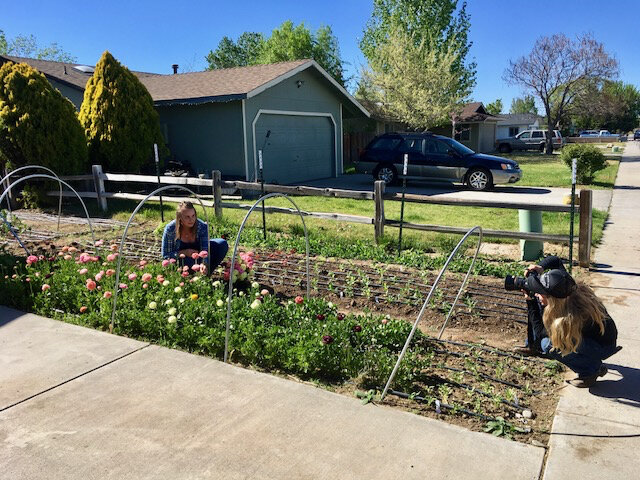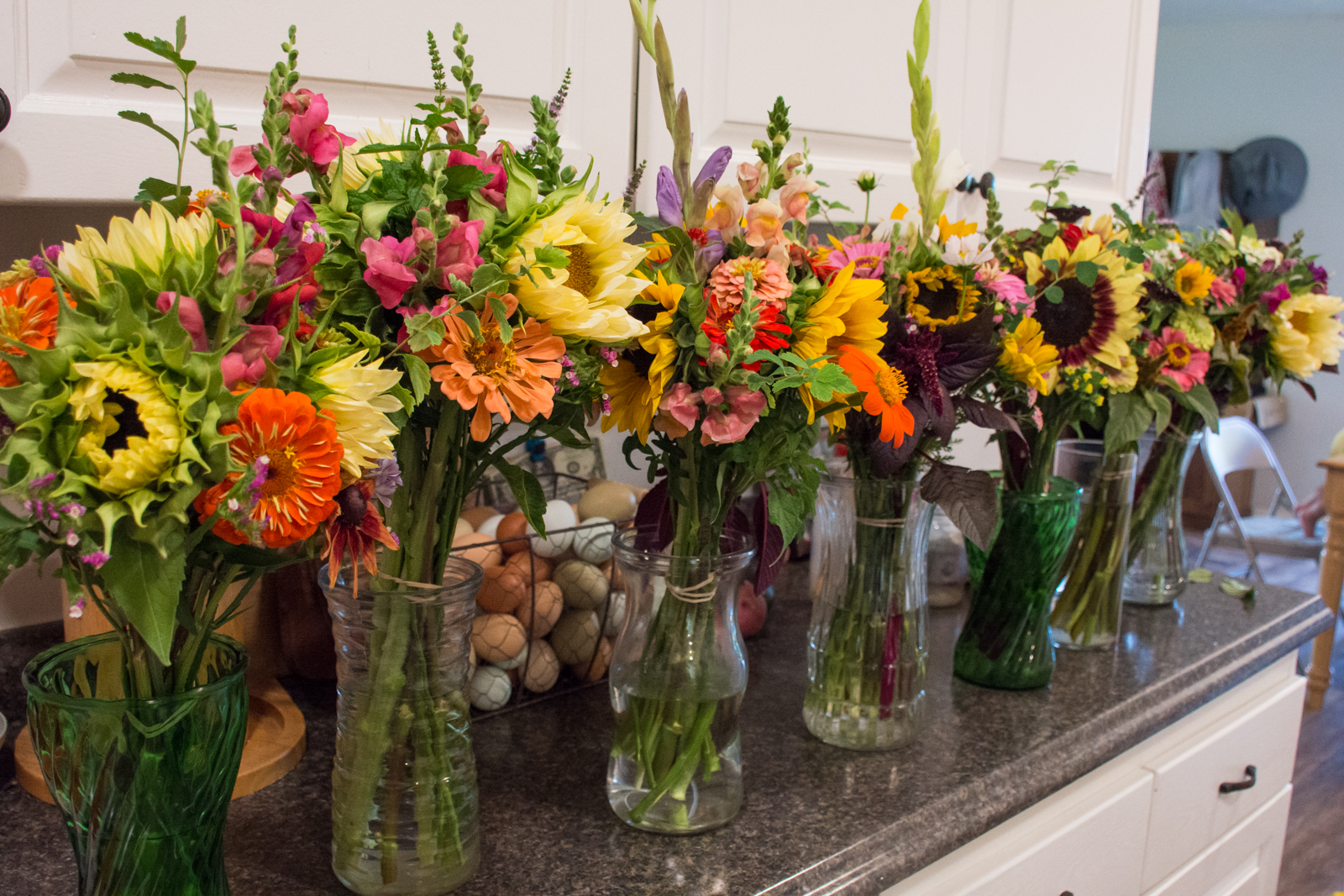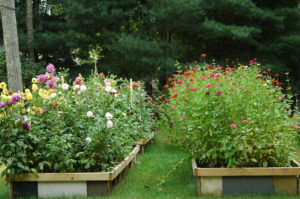To start a backyard flower farm, choose a sunny location and select flowers that thrive in your climate. Prepare the soil by enriching it with compost and ensure proper drainage.
Starting a backyard flower farm is an exciting venture that combines creativity with nature. Flowers can enhance your outdoor space and provide a source of income. This guide will help you navigate the essential steps to establish a thriving flower farm.
From selecting the right blooms to understanding soil health, each aspect plays a crucial role in your success. With careful planning and dedication, you can transform your backyard into a vibrant oasis. Enjoy the benefits of fresh flowers while cultivating a rewarding hobby or business. Embrace the beauty and joy that comes with growing your own flowers.

Credit: www.sierraflowerfarm.com
How to Start a Backyard Flower Farm : Step by Step Guide
Introduction To Backyard Flower Farming
Starting a flower farm in your backyard can be very rewarding. Growing flowers not only beautifies your space but also helps the environment. Flowers attract pollinators, like bees and butterflies, which are crucial for our ecosystem.
Having a flower farm provides fresh blooms for your home. You can create stunning arrangements for special occasions. Additionally, selling flowers at local markets can earn you some extra income. This hobby also promotes mental well-being through gardening.
Enjoying the outdoors while tending to flowers can reduce stress. The vibrant colors and sweet scents create a joyful atmosphere. Starting a flower farm is a fun and fulfilling way to connect with nature.
Choosing The Right Location
Choosing the right spot for your flower farm is very important. Soil quality affects plant growth. Test the soil for nutrients and pH levels. Use a soil test kit for accurate results.
Look for areas with good drainage. Flowers need water but do not like to be soaked. Areas with compacted soil can cause problems.
Sunlight is also vital for flowers. Most flowers need at least 6 hours of direct sunlight each day. Check for areas that get enough sun and avoid shaded spots.
Consider nearby trees or buildings that might block sunlight. A well-lit area helps flowers grow strong and vibrant.
Selecting Your Flowers
Choosing the right flowers is essential for a successful backyard farm. Sunflowers bring bright colors and attract pollinators. Zinnias are easy to grow and bloom all summer long. Marigolds help keep pests away and add beauty. Dahlias come in many shapes and sizes, perfect for arrangements.
Seasonal flowers can enhance your garden’s charm. Spring favorites include tulips and daffodils. Summer offers options like cosmos and lavender. In fall, consider planting chrysanthemums and asters for vibrant colors. Winter blooms like pansies can brighten up the cold months.
| Season | Popular Flowers |
|---|---|
| Spring | Tulips, Daffodils |
| Summer | Cosmos, Lavender |
| Fall | Chrysanthemums, Asters |
| Winter | Pansies |
Planning Your Flower Farm Layout
Planning your flower farm layout is essential for success. Use design principles to create a beautiful space. Start by sketching a map of your yard. Include areas for flowers, paths, and tools.
Maximize space efficiency by choosing the right plants. Group flowers with similar needs together. Consider using raised beds to save space and improve drainage. Vertical gardening can also help use limited space.
Leave room for paths. They allow easy access to your flowers. Paths should be wide enough for tools and maintenance. Sunlight and water access are also crucial for healthy blooms.
Soil Preparation And Fertilization
Improving soil health is important for a successful flower farm. Healthy soil supports strong plant growth. Start by testing your soil. This helps identify nutrients and pH levels.
Organic fertilizers come from natural sources. They improve soil structure and promote biodiversity. Examples include compost, manure, and bone meal.
Synthetic fertilizers provide quick nutrients. They can boost plant growth but may harm soil life. Choosing the right fertilizer is key.
| Type of Fertilizer | Benefits | Drawbacks |
|---|---|---|
| Organic | Improves soil health | Slower nutrient release |
| Synthetic | Fast nutrient supply | Can harm soil organisms |

Credit: idreamofacres.com
Planting Techniques
Start by choosing high-quality seeds for your flower farm. Use seed trays or small pots for starting seeds indoors. Fill them with seed starting mix for the best results. Ensure the soil is moist but not soggy. Place the trays in a warm location with plenty of light.
Once seedlings grow a few inches tall, it’s time to transplant. Prepare a new location with rich, well-draining soil. Make holes in the soil for each seedling. Gently remove seedlings from trays, being careful with roots. Place them in the holes and cover them with soil. Water them well to help them settle.
Ongoing Care And Maintenance
Watering is key for a healthy flower farm. Water deeply and less often. Early morning is the best time to water. This helps reduce evaporation.
Always check the soil moisture. Use your finger to feel the soil a couple of inches down. If it’s dry, it’s time to water.
Weeds can harm your flowers. Pull them out by hand or use mulch to prevent growth. Mulch keeps the soil moist and reduces weeds.
Pest control is important too. Inspect plants regularly for any pests. Use natural methods like soap sprays or introduce beneficial insects.
| Pest | Control Method |
|---|---|
| Aphids | Soap spray or ladybugs |
| Slugs | Beer traps or copper tape |
| Spider mites | Water spray or predatory mites |

Credit: homestead.motherearthnews.com
Harvesting And Marketing Your Flowers
Harvesting flowers is a careful task. Choose early morning or late afternoon for the best results. Cut stems at a 45-degree angle for better water absorption. Always use sharp tools to avoid damaging plants.
Handle flowers gently to prevent bruising. Remove any leaves that will be below water. This helps keep the flowers fresh longer.
When selling flowers locally, consider farmers’ markets or local shops. Make eye-catching displays to attract customers. Offer mixed bouquets for variety. Create a social media presence to reach more people.
Engage with your community through workshops or events. This builds trust and boosts sales. Always keep your quality high to gain loyal customers.
Frequently Asked Questions
How Do I Start A Flower Farm At Home?
Starting a flower farm at home requires planning and preparation. First, choose a suitable location with ample sunlight. Select flowers that thrive in your climate. Prepare the soil and consider using organic practices. Lastly, develop a marketing strategy to sell your blooms locally or online.
What Flowers Are Best For A Backyard Farm?
The best flowers for a backyard farm include sunflowers, zinnias, and cosmos. These flowers are easy to grow and attract pollinators. They also offer vibrant colors and long blooming periods. Consider your local climate and seasonality when choosing varieties to maximize your harvest.
How Much Space Do I Need For A Flower Farm?
You can start a flower farm in as little as 100 square feet. This space allows for a variety of flowers and proper spacing. However, more space will yield a larger harvest. Assess your gardening capabilities and local regulations before expanding your flower farm.
When Is The Best Time To Plant Flowers?
The best time to plant flowers varies by type and climate. Generally, spring is ideal for most annuals. Perennials can be planted in early spring or fall. Check your local gardening zone to determine the optimal planting dates for your specific flowers.
Conclusion
Starting a backyard flower farm can be a rewarding venture. With careful planning and a passion for blooms, you can transform your space into a vibrant paradise. Remember to research your flowers, maintain soil health, and market your blooms effectively.
Enjoy the journey and watch your flower farm flourish beautifully.
